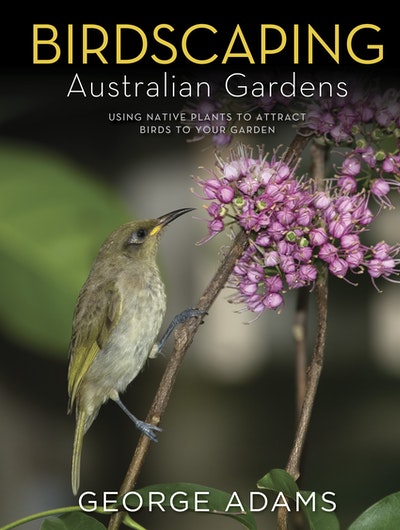Simple instructions from A Complete Guide to Australian Birds to create the ultimate bird haven in your back yard.
Written in everyday language, with crisp, brilliant digital images taken in the wild, A Complete Guide to Australian Birds is divided into 27 chapters, with each chapter opening with fascinating background information. The easily accessible information on each bird includes: common and scientific names, size, description, behaviour, preferred habitat, feeding habits, voice, status and breeding. In the passage below, author George Adams provides a guide to creating a bird-friendly habitat in your own garden.
You can make a difference in your own garden by creating suitable habitats for the birds in your area.
A garden landscaped to attract birds needs abundant natural food sources such as flower nectar, grass seed heads, fruits, berries and a diversity of plants to attract insects, because many birds are insectivores. A birdbath or small pond will bring thirsty birds as well as an interesting assortment of wildlife, including frogs, dragonflies and butterflies. You can attract a greater variety of birds to nest in your garden by providing a diversity of plant habitats, such as clumps of shrubbery, tangled thickets and taller trees.
Providing cover and shelter
Australian native plants provide effective shelter for native birds, whose colour and markings have adapted to blend with the indigenous flora. Effective shelter can be provided in a relatively small area by plants that provide a solid mass of foliage from ground level to 3m or higher. A row of trees or shrubs can also be a pathway for birds across a garden and will attract smaller birds that would otherwise not cross the open space for fear of attack from predators. Select plants to provide sequential flowering for year-round flowers and fruit.
Providing nesting sites
Birds choose their nesting sites carefully and guard their territory. By keeping their nest site and breeding territory off limits to members of the same species that compete for the same food, the birds ensure sufficient food for themselves and their nestlings. Nesting sites must have some protective cover.
The eggs and nestlings are most vulnerable to predators and the degree of exposure often determines the nesting location. Songbirds usually seek protective shelter in dense foliage or prickly shrubs.
Many Australian birds, such as parrots, lorikeets, Kookaburras and treecreepers, as well as many mammals, nest in hollows found in the dead limbs of mature trees. In undisturbed bushland, mature eucalypts provide numerous nesting hollows. Most eucalypts need to be 50 to 60 years old before adequately sized nest hollows are available for wildlife. This age usually coincides with their optimum commercial value and they are often selected for logging.
In urban areas the removal of old, decayed or dead trees, the removal of tree limbs, patching up cavities in established trees and competition from introduced starlings, including the Common Starling, Common Myna and Eurasian Tree and House Sparrow, have caused many cavity-nesting birds and mammals to be deprived of nesting opportunities, resulting in local extinctions.
In rural areas, excessive land clearing has resulted in a shortage of nesting sites and depletion of habitat. (La Trobe University has estimated that 90 per cent of Victoria’s natural vegetation, ‘mainly the woodland ecosystems’, has been lost since European settlement.)
You can provide homes for birds by purchasing or constructing a simple nest box. The diameter of the entrance hole will determine which species of bird can use the nest box.
Using water to attract birds
A supply of fresh, clean water is an important element for attracting birds to your garden. Throughout the year, they need water for bathing and drinking. The simplest way to provide water is to set out a birdbath or create a beautiful garden pond in a quiet area of the garden.
Birds bathe and preen in order to keep their feathers in perfect condition for flying and to maintain the waterproofing and insulating properties. When bathing, most birds scoop water up in their bills and splash it over their backs, flapping their wings and ruffling their feathers in a manner that could attract the attention of cats. Wet feathers will hinder the birds’ ability to fly and escape a cat or other predator, so the position and design of the birdbath is critical for the birds’ survival.
Place your birdbath near protective shrubbery – close enough to allow the birds to escape to safety, but not so close that a cat can hide at close range and easily pounce on the unwary birds.















